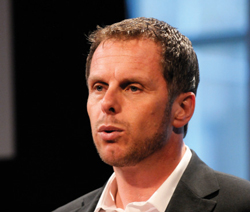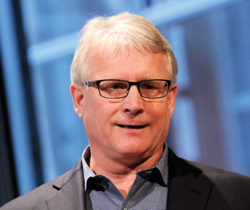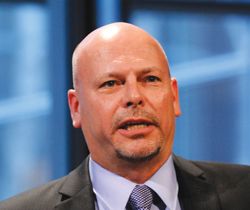 |
Alan Ulsifer, OD, CEO, president and chair of
FYidoctors, described how his organization grew from a meeting of nine
practices in June 2006 to 102 locations today.
|
 |
| William “Buzz” Hollis, president and CEO of Doctors Vision Center, explained how he turns challenges into opportunities. |
 |
| Don Bye, VP of Optical Services for Shopko said that
he is evaluating where to add optical in the 193 Pamida locations being
integrated into this mass merchant. |